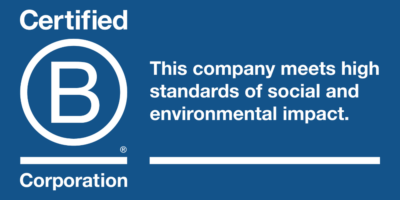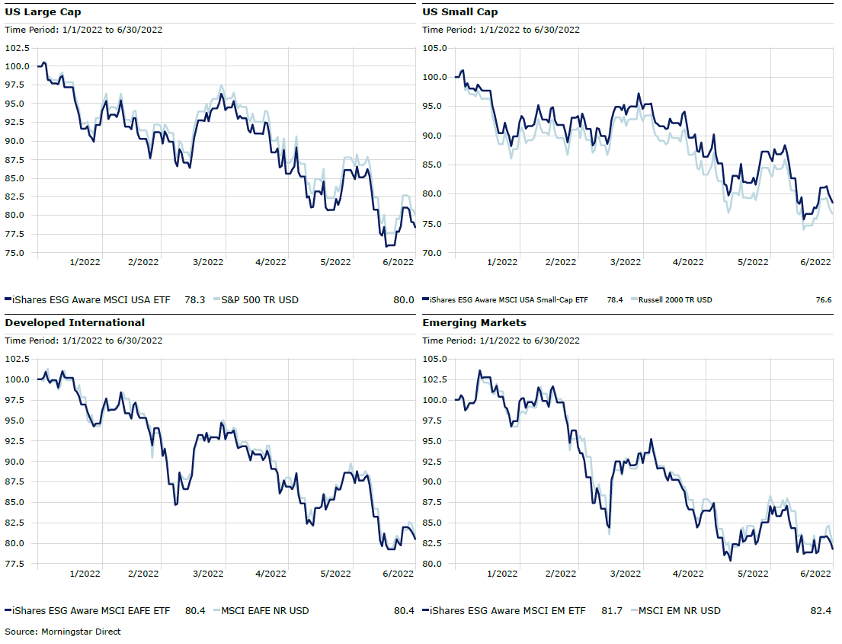Advisor Perspectives. Sept. 5, 2022. By Connor Doak, CFA.
Mahatma Gandhi once said, “First they ignore you, then they laugh at you, then they fight you, and then you win.” The environmental, social, and governance (ESG) investment community is deep within the third stage. ESG investing has been subjected to brutal headlines, politically motivated attacks and editorials from many market and political pundits in investment news outlets such as the Wall Street Journal, Barron’s, The Economist, the Financial Times and others over the first half of the year.
These headlines have called for the implosion of the “ESG bubble,” declared 2022 the year of ESG pushback, and even include Elon Musk tweeting out that “ESG is a scam” after Tesla was removed from an ESG-focused index.
Attacks on ESG
Some of the attacks on ESG are warranted, especially given the confusion or misinformation regarding the definition of ESG investing, what falls under the ESG umbrella, and even the lack of consistency from ESG ratings firms.
While many investment firms prefer the term “sustainable investing,” ESG has become the acronym that stuck in the press and has been widely adopted, although there is plenty of differentiation under the broad ESG umbrella. To help clear up the confusion, here are a few quick definitions of what falls under “ESG” – as both an input to and objective of the investment process.
Source: Federated Hermes
ESG integration can mitigate risk
As a reminder, traditional stock and bond research consists of evaluating financial statements and revenue prospects with the goal of identifying the fair value and then buying or selling based on that assessment. One of the most important characteristics of traditional financial analysis is the identification of risks that could materially affect the business of the company. Integrating ESG criteria takes the analysis one step further by attempting to uncover non-financial risks that could materially affect the business.
Examples vary from evaluating energy-efficiency policies, corporate culture and employee turnover, and board and executive compensation to be sure they are aligned with shareholder interest. None of these are directly shown on the financial statements, but all can have a material effect on the quality of the business. These, along with many other factors, are just a taste of what goes into the ESG evaluation for each company.
ESG integration and ratings are complex. Just because a company makes a product that is great for the environment doesn’t mean it sources the materials for the product in an efficient or humane way, and on the other side of the spectrum, a company in a historically “dirty” industry may meet certain ESG criteria if it is a leader in the transition to a carbon-free economy.
These conflicting standards lead to confusion amongst investors, which is why many firms use a “materiality framework” and weigh the different ESG criteria based on their importance to financial performance for that industry and company. Interestingly, many companies have already enacted these practices into their business without any government mandate or investor pressure. Management teams have taken the initiative because they recognize the impact these non-financial risks can have on their business.
Growth of ESG has exploded
This all seems straightforward, right? Looking at all factors that could help identify risks and paint a clearer picture seems like common sense. So why has ESG taken so much heat this year from the media? Well, first and foremost, the growth of ESG investments has exploded. Over $400 billion is invested in mutual funds and ETFs with a sustainable mandate, alongside the trillions of dollars invested in institutional separate accounts. This rapid increase in total assets is making ESG investing too large to ignore. The huge growth also brings with it plenty of skeptics. Many of these skeptics see ESG an easy way for investment managers to “rebrand” poorly performing funds as “ESG integrated” and capture a slice of this growth.
Rebranding funds as ESG rightfully raises concerns. ESG funds generally are specialized products since they are often actively managed and incorporate ESG criteria, thus generally commanding a higher management fee. This rebranding also opens the door to “greenwashing,” which occurs when a fund says it incorporates ESG criteria into the investment process – but does very little in the way of ESG analysis.
These issues highlight the importance of having a proper due-diligence process to understand the fees that are being charged and the level of ESG integration that is inherent in the investment strategy. This has become such a large problem that the SEC formed a climate and ESG taskforce in 2021 and recently investigated DWS1 and fined BNY Mellon2 for ESG disclosures and greenwashing. These investigations, alongside the newly proposed regulations regarding disclosures3 of ESG branded investments, drive ESG skepticism.
While those fines have given skeptics an excuse to laugh at ESG, pioneers in the ESG space have been advocating for regulation for a very long time and are excited that it is catching up in the industry. Investors that want ESG integration need to be reassured the funds and firms they are investing in are committed to investing in a responsible and sustainable manner. These recently announced regulations provide confidence in the ESG investment industry but will not prevent bad actors from greenwashing. Regulation and disclosure are a good start, but a proper due-diligence process will be paramount in ensuring investors are truly getting ESG Integrated managers.
Perceived performance of ESG investments
Another reason that ESG has taken a beating from the press recently is the perceived performance of ESG products. ESG opponents have focused on what happened in 2022 when energy stocks surged on the supply constraints caused by the Ukraine war and the market correction in technology stocks. Many ESG funds were underweight energy and overweight technology, thus underperforming the market.
While some of that underperformance appears to be turning around, six or 12 months is too short a time frame to judge performance. You need data from multiple years to reach a conclusion that an investment strategy has merit or that a particular style can work in different market environments.
As you can see from the chart below, the uptick in ESG investing exploded starting in 2014. This was partly due to the debunking of the myth that to invest responsibly you need to sacrifice performance. By 2014, ESG funds had made enough headwind in developing multiple-year performance track records that investors began to believe they could invest sustainably without sacrificing returns. Opponents in 2022 are fighting to reaffirm that myth.
Source: USSIF Report on US Sustainable, Responsible and Impact Investing Trends 2020
Let’s look at some of the short- and long-term data. When comparing ESG large-cap-blend funds to their peers, you get some interesting results. In 2021, 66% of ESG large-blend funds beat the Russell 1000 Index, while only 54% of the entire peer group outperformed. This is a short time frame – but still telling.
The data becomes even more stark over the longer periods of time. Over the trailing five-year period, 40% of ESG labelled funds beat the index, while a mere 18% of the entire peer group outperformed the index.
ESG funds beat the market at a significantly higher rate than traditional funds. But what if the last five years was just an ESG friendly environment?
Let’s look at some even longer-term data. The longest tenured ESG-focused index is the MSCI KLD Social 400 Index, which dates back to 1990. Given the MSCI KLD Social 400 Index focuses primarily on large-cap U.S. companies with positive ESG scores, the best-known U.S. stock market index, the S&P 500, is a natural comparison.
As you can see from the chart below, with over 30 years of data, the MSCI KLD Social Index has outperformed the S&P by 0.39% per year. This may not seem like much, but over the course of 32 years, if you invested $10,000 in both indexes in May of 1990, the ESG index would have earned you over $26,000 more.
To broaden the focus, the iShares ESG Aware Exchange Traded Funds (ETFs) are among the largest broad-market ESG ETFs. When comparing their returns to each of their appropriate indexes, all of them have beaten their respective index since inception, except for the iShares ESG Aware MSCI USA ETF (ESGU), which has exactly matched the return of the S&P 500.
Skeptics have pointed to the 2022 year-to-date returns as support that ESG investing sacrifices return. Both the iShares ESG Aware MSCI USA ETF (ESGU) and iShares ESG Aware MSCI EM ETF (ESGE) are trailing so far in 2022…ESGU by 1.7% and ESGE by 0.7%. But the small-cap and developed-international versions are ahead and dead even with the benchmark, respectively.
A recent Bloomberg4 article also reported that ESG funds are lagging behind in Europe and Japan so far in 2022; however, it declined to point out that U.S.-based active ESG funds are outperforming. So, while the US large-cap index ETF is underperforming, the actively managed funds are outperforming. Vice versa, while the European-based index ETF is flat relative to the benchmark, the active funds are underperforming. This time frame is still less than one year, which is well below accepted industry standards, and the overall ESG performance results during this period are mixed.
ESG and energy
While the data shows ESG performance has been flat or slightly inferior in a few asset classes over this very short-term time horizon, the pushback and politicization of ESG has been much sharper than warranted given, at most, a few percentage points of return differential. Why has there been so much negative press? People pay a lot of attention to energy prices, which have rallied significantly over the last year. A few commentators are blaming ESG funds because some ESG investment firms have divested from companies in the fossil fuel industry.
There are a few problems with the argument that ESG funds have indirectly influenced the increase in oil and gas prices. Utilizing ESG criteria for an investment has no impact on the price of oil and gas. The price of energy is still very much a function of supply and demand. The sharp increase in oil and gas prices was primarily due to the imbalance between supply and demand resulting from the rapid shutdown of the global economy in early 2020, and the robust demand that has occurred since the economy reopened. Shutting down an entire economy is easier than bringing production back to full capacity, so the supply of oil is still lagging the demand.
In addition, the war in Ukraine and U.S. public policy decisions regarding energy have put further pressure on oil and gas prices. Russia is a major global supplier of oil. Cutting off its supply from the world is driving prices even higher (especially in Europe where they are heavily dependent on Russian natural gas), as is the political red tape surrounding increased domestic US production. The combination of these effects, along with the supply and demand imbalance, are causing the sticker shock you feel every time you fill up your gas tank… not the handful of asset managers shunning companies in the fossil fuel industry.
But energy is an easy target for ESG skeptics since most ESG investments are underweight the energy sector. That underweight has undoubtedly detracted from performance since energy is the only sector in the market that has generated a positive return, and it has outperformed every other sector by at least 32%.
ESG education needed
Given the confusion, some of the attacks on ESG in 2022 were merited.
Since “ESG” is the generally accepted acronym, those of us in the asset management industry need to do a better job of explaining what we do and why we do it. The ESG is not an investment style nor a political agenda. At its core, ESG is the practice of integrating non-financial data that can have a material financial impact on a company into the research process.
Education on the core attributes of ESG investing paired with the acceptance that ESG investing does not reduce long-term performance will lead to widespread adoption by asset managers.
Once ESG reaches a critical scale where it is no longer used as a scapegoat or political tool, the ESG industry will finally win.
Click here for the article on Advisor Perspectives.
















